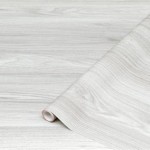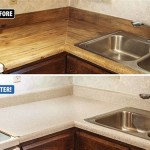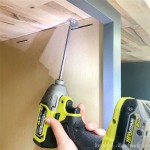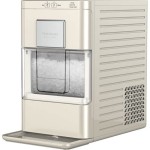Stove and Countertop Gap Strips: A Comprehensive Guide
Stove and countertop gap strips, also known as gap covers or fillers, are essential kitchen accessories designed to bridge the gap between the stove and countertop. This seemingly small space can become a major nuisance, attracting crumbs, spills, and even pests. Gap strips provide a simple yet effective solution, preventing debris from falling into the hard-to-reach crevices and enhancing the overall cleanliness and appearance of the kitchen.
Types of Stove and Countertop Gap Strips
Various materials and designs cater to different needs and aesthetics. Understanding the available options allows homeowners to choose the most suitable gap strips for their kitchens.
Silicone Gap Covers: These are the most common type due to their flexibility and heat resistance. Silicone conforms to uneven surfaces, creating a tight seal that prevents debris from entering. They are typically dishwasher safe, making cleaning easy and convenient. Silicone gap covers are available in various colors to match different countertop and stove finishes.
Stainless Steel Gap Covers: For a more premium and durable option, stainless steel gap covers offer a sleek, modern look. They are highly resistant to heat, stains, and corrosion, making them ideal for high-use kitchens. Some stainless steel gap covers come with adhesive backing for easy installation, while others feature a T-shape design that slides between the stove and countertop.
Plastic Gap Covers: Plastic gap covers are a budget-friendly alternative to silicone or stainless steel. While generally less durable, they still provide adequate protection against spills and crumbs. They are available in various colors and designs, but may not offer the same level of heat resistance as other materials.
Choosing the Right Gap Strips
Selecting the appropriate gap strips requires considering several factors to ensure optimal performance and longevity. Measurements are crucial, as gap strips come in various widths and lengths. Accurately measuring the gap between the stove and countertop will ensure a proper fit.
Measuring the Gap: Use a tape measure to determine the width of the gap. It’s also essential to measure the length of the stove’s sides where the gap strips will be installed. Some gaps may be wider in certain areas, so taking multiple measurements is recommended. Consider any curves or irregularities in the countertop edge, as this may influence the type of gap cover needed, favoring flexible materials like silicone.
Material Considerations: Think about the overall aesthetic of the kitchen and the level of heat resistance required. Silicone offers good heat resistance and flexibility, while stainless steel provides superior durability and a modern look. Plastic is a cost-effective option, but may not be suitable for areas exposed to high heat.
Installation Method: Gap strips typically come with either adhesive backing or a T-shape design for installation. Adhesive backing is easier to apply but may not be as secure as the T-shape design, which wedges between the stove and countertop. Consider the installation method when choosing gap strips, especially if the stove is frequently moved for cleaning.
Installation and Maintenance of Gap Strips
Proper installation and regular maintenance are crucial for maximizing the effectiveness and lifespan of stove and countertop gap strips.
Cleaning the Area: Before installing the gap strips, thoroughly clean the surfaces of the stove and countertop adjacent to the gap. Remove any grease, grime, or debris to ensure a secure bond for adhesive-backed strips and a snug fit for T-shaped covers. A clean surface also prevents trapped debris from causing issues later.
Applying the Gap Strips: For adhesive-backed strips, peel off the protective backing and carefully align the strip with the gap. Press firmly along the entire length to ensure a strong bond. For T-shaped covers, simply slide the cover's flange between the stove and countertop. Ensure the cover sits flush against both surfaces.
Regular Cleaning: Clean the gap strips regularly, following the manufacturer's instructions. Silicone and plastic gap covers are usually dishwasher safe. Stainless steel covers can be wiped clean with a damp cloth and mild detergent. Regular cleaning prevents the buildup of grime and ensures the strips remain effective in preventing debris from entering the gap.
Replacing Worn Strips: Over time, gap strips may become worn, cracked, or discolored. Inspect the strips periodically and replace them as needed to maintain a clean and hygienic kitchen. Replacing worn strips also prevents pests from exploiting damaged seals and entering the gap.

Eeekit 2pcs Silicone Stove Gap Covers Heat Resistant Kitchen Counter Fillers Easy To Clean 21 Black

Countertop Gap Filler Stove Strip Protection 2 Unidades

Set Of 2 Countertop Gap Filler Coopers Stortford

Monfince Stove Counter Gap Covers Silicone Kitchen Stopper Heat Resistant And Safety Countertop Strips Space Fillers 21 25inch Wal Com
Kitchen Silicone Stove Counter Gap Cover Extra Wide Filler Range Strips 2pcs Between Oven And Countertop Dishwasher Explore China Whole Rubber Cup Other

Silicone Stove Counter Gap Covers Flexible Seal The Kitchen Tool Healthy And Durable Cover

1 3 8 Wide Brushed Stainless Steel Kitchen Stove Counter Top Gap Filler Trim Cap 2 Pack Etsy

Kitchen Stove Counter Gap Silicone Cover Filler Strip Oven Guard Seal Slit So

Magic 1 4 In X 20 Counter And Appliance Gap Eraser Aluminum 3021

These Stove Gap Covers Will Keep Your Kitchen So Much Cleaner
See Also








